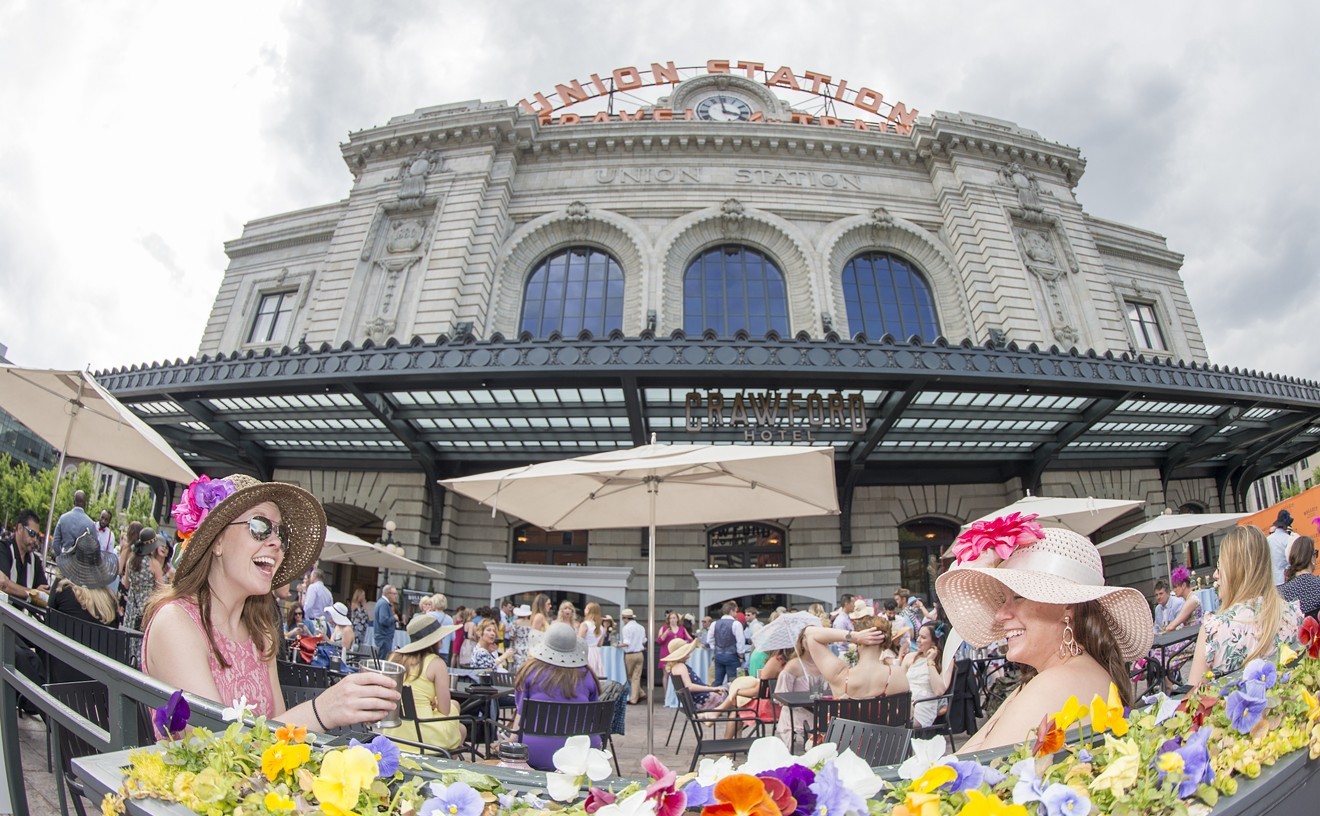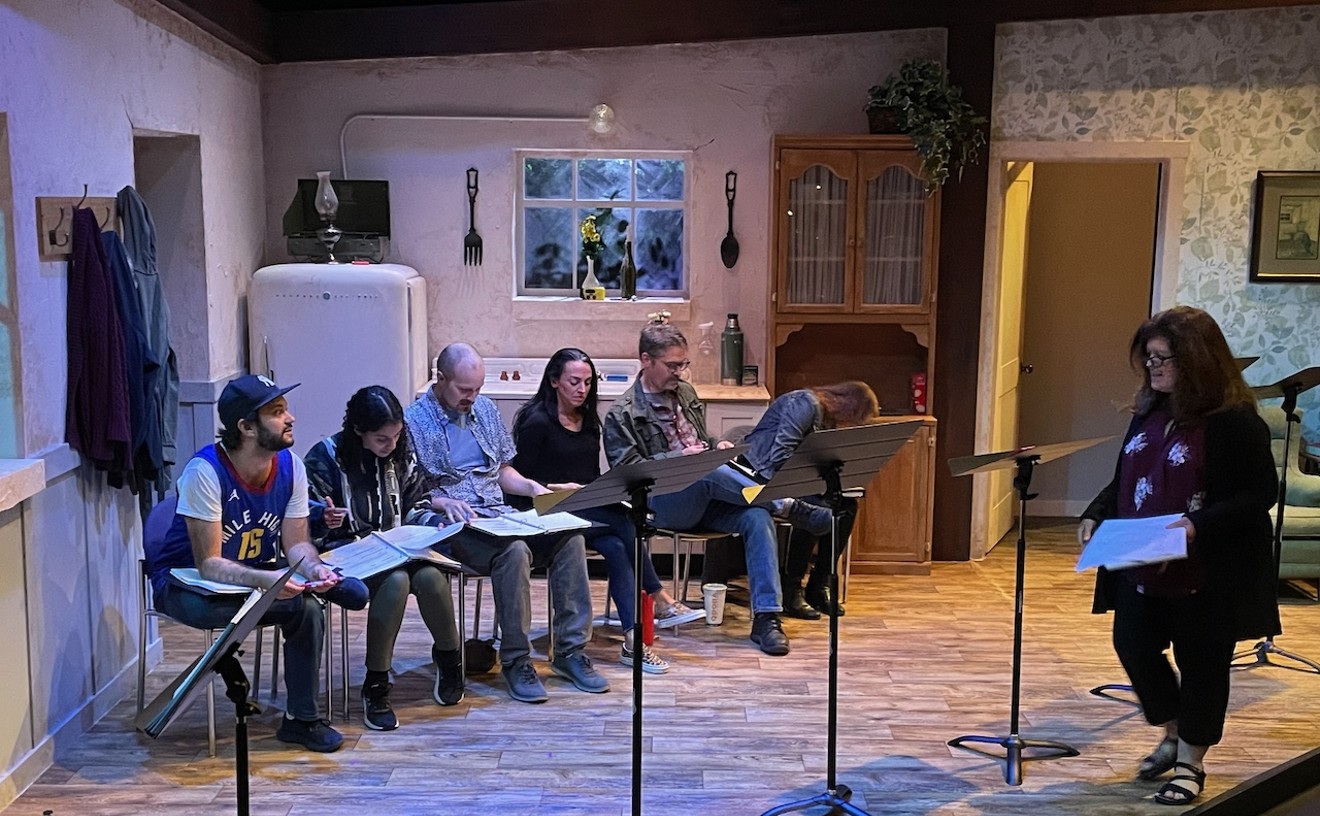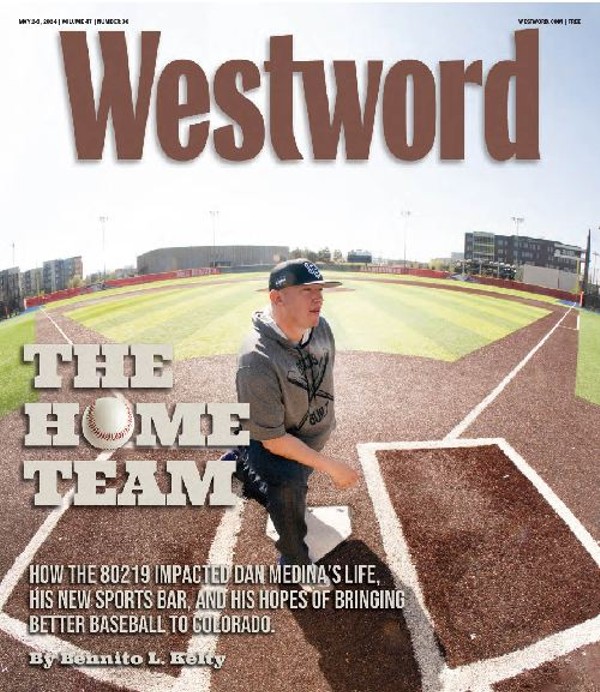Man and Earth: Contemporary Paintings From Taiwan, at Metro State Center for the Visual Arts, presents a surprisingly dark view of that island nation. In the same way that war, injustice and disillusionment caused early-twentieth-century European artists to reject Western art ideals and seek new forms of expression in modernism, so some Chinese artists have begun to break away from the domination of history. Though Taiwanese artists are less straitjacketed than their counterparts on the mainland, they still must defy enormous societal and political pressures in order to experiment with the avant-garde. This exhibition's paintings give the impression of a huge and dangerous unknown about to explode and create havoc.
The landscapes portrayed bear some resemblance to the serene gardens of the Chinese past, but an overlay of postmodern imagery appears like graffiti obscuring a distinguished old building. Traditional brushwork seems to melt and wobble under the heat of current events. Taiwan's pollution, its overcrowded living conditions and the pain of the artists' estrangement and isolation haunt these canvases, destroying the dynasties of illusion usually depicted in Chinese paintings.
The emerging viewpoint is a revelation, throwing light on Asia, the deconstructionist movement and art itself. Tradition-based details make this revolutionary outlook seem inevitable--righteous outcry rather than strained affectation. The scroll paintings of Yu Peng offer the best example of this mutated Chinese style. At first glance, the narrative works resemble genteel examples of the well-known fanciful landscapes that for centuries invited viewers to follow their orderly pathways from the bottom of the scroll to the top, mimicking a walk through a lovely garden. But Yu uses the familiar format subversively to throw together fragments of nature, banal office buildings, trash dumps and quarrelsome couples, resulting in a rattling pastiche of longing and protest. Completed in the calligraphic style of nineteenth-century China, works such as Yu's "Greenery Against Grey Walls" have all the poetry of that antique genre, with an uncustomary roar of punk-rock angst.
Even more skewed from tradition, the works of Cheng Tsai-Tung also seem the most abstract. The grip of Chinese custom is apparent in the diagonally arranged empty spaces between objects in Cheng's paintings. But his bare canvases and sketchy backgrounds populated with puffy, limp-spirited people look as if someone let Philip Guston loose in an Asian-souvenir shop. "Family Outing" shows a family clinging together in an empty field, trying to smile but appearing to scream. In "Autumn Colours at Mt. Chueh and Mt. Hwa," Cheng's motif of a balloonlike head (his own?) floats, disembodied, over an almost-typical landscape. A frame around the bobbing head indicates the awkwardly artificial, art-history orientation of the piece.
A similar defiance is evident in the paintings of Hsu Yu-Jen, who must have studied German artist Anselm Kiefer's neo-expressionist work. Hsu's dark, primal canvases are encrusted with heavy applications of staccato paint, the storm of strokes building up backgrounds, objects and faces in the canvas. This messy, disorderly technique is about as un-Chinese as art can get: Hsu could be painting the very pollution in the air. Items such as "Book" and "City" become half-obscured icons under the artist's furious treatment.
Despite the difficulty of many of these fascinating paintings, no advanced degree in art or Chinese culture is necessary to understand their significance. The gravity of the content and the intensity of execution make all of them a direct hit to the heart.
Man and Earth: Contemporary Paintings From Taiwan, through April 22 at Metro State Center for the Visual Arts, 1701 Wazee, 294-5207.










